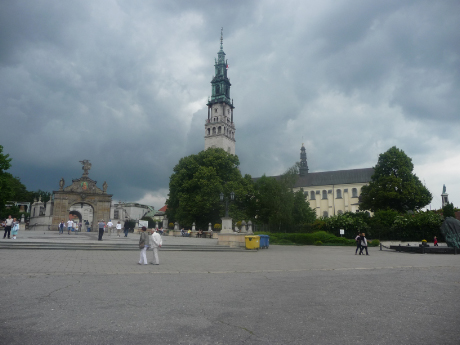 |
 |
| On the way from Krakow to Warsaw we stopped at Czestochowa, home of the Black Madonna. |
Although mostly famous for the icon, the site is also strongly devoted to St. John Paul (Pope John Paul II). |
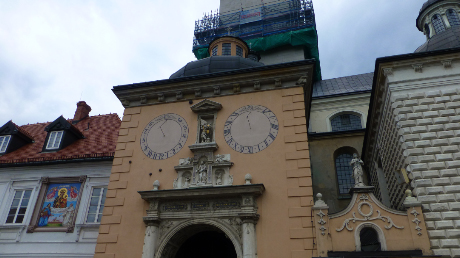 |
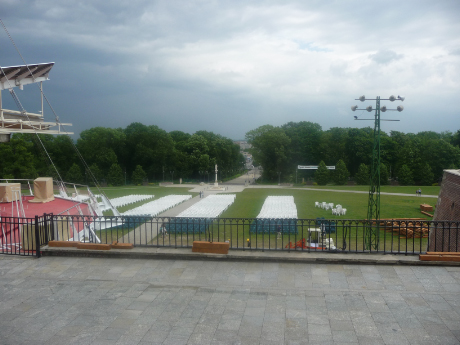 |
| The monastery where the Black Madonna is housed is a major pilgrimage spot as the Madonna is thought to have healing powers. |
The field where John Paul II celebrated Mass for a huge crowd. He had a strong devotion to the Black Madonna and visited Czestochowa many times. |
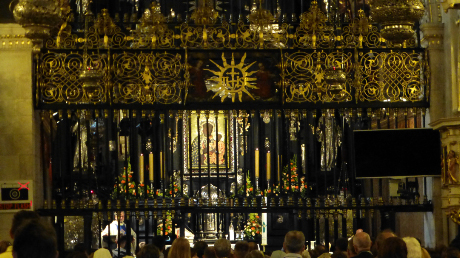 |
 |
| The interior of the Church of the Black Madonna is richly decorated. |
The Black Madonna herself has several sets of "clothes" that are changed during the year and through which one can see the icon itself. |
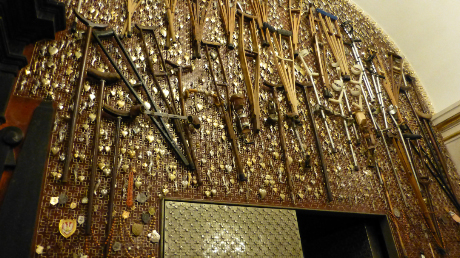 |
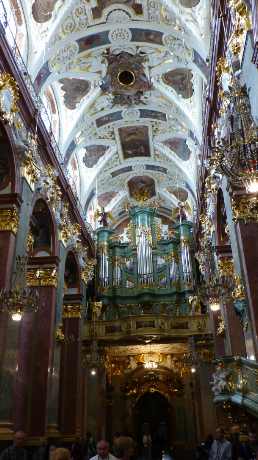 |
| These are crutches and other mementos from people who have been healed at the church. |
Next to the church is a chapel with amazing decoration. |
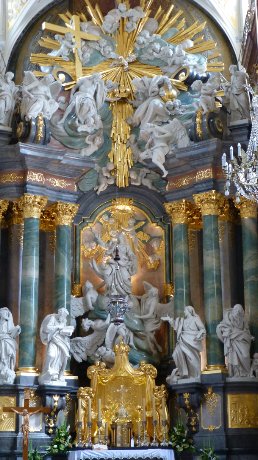 |
|
| The chapel gives an idea of how wealthy the monastery is. They also have a Treasury of gold and jeweled objects (no pictures allowed), given as gifts by governments and individuals. |
|
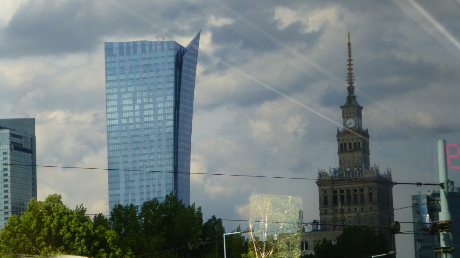 |
 |
| Warsaw was entirely destroyed in WWII and today is an odd mix of Soviet-era cement block buildings and modern glass skyscrapers. |
The most distinctive building in the city is the Soviet-era "Palace of Culture and Science," a "gift" from the Soviet Union in the 50's. It is controversial because it reminds Poles of the era of Soviet domination. |
 |
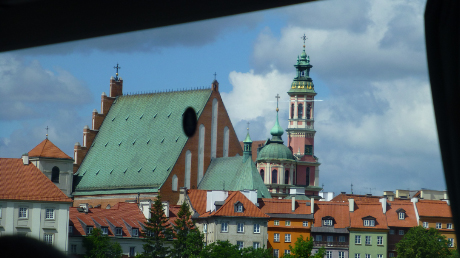 |
| Some Poles say that the best view of the city is from the Palace of Culture because from there you cannot see the building! |
Unlike the Czech Republic, Poland retained its strong ties to the Catholic Church during the Cold War. There are churches everywhere and the Soviet authorities never attempted to shut them down. |
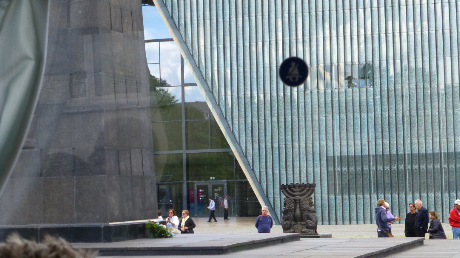 |
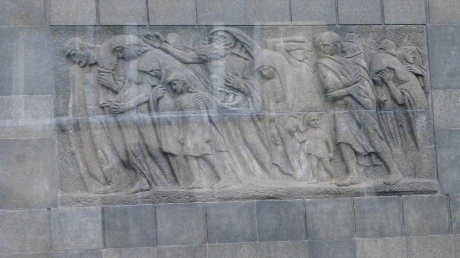 |
| The Museum of Polish Jewish History emphasizes the lives and contributions of Jews in Poland throughout their history, rather than focussing on their destruction in WWII. |
A monument to the 1943 Ghetto uprising, when the Jews in the Polish ghetto rose up against the Nazi occupiers as a protest against the Final Solution. About 13,000 Jews perished; the rest were sent to concentration camps and the ghetto was entirely razed to the ground. |
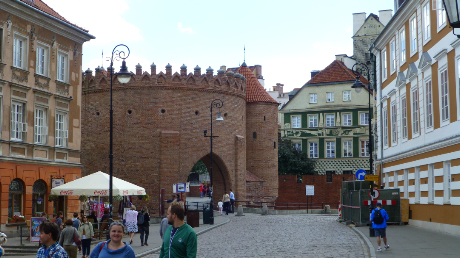 |
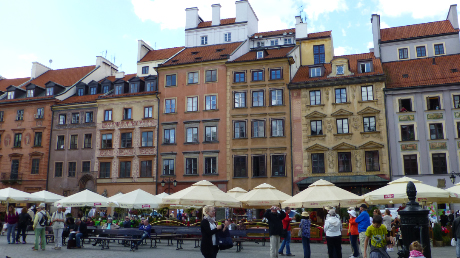 |
| The Old City of Warsaw, including this City Gate, were reconstructed after the War. |
The original buildings were copied as closely as possible. The Soviets did not want an enclosed square, so this row of houses was not supposed to be built, but the Poles built it anyway. |
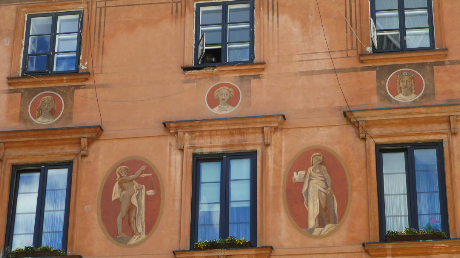 |
 |
| Early social media: a father had three daughters whom he needed to marry off, so he painted their faces on the wall of his house to attract suitors. It is not known how accurate the portraits were. |
The Presidential Palace stands in a space that has housed the seat of government since the 1600s. The Palace is one of the few buildings that survived the destruction of Warsaw during the War and today is the official seat of the President, although he does not live there. |
 |
 |
| One day while we were there there was a major protest along the main thoroughfare to the Old Town. The protest was entirely peaceful and we do not know what the subject was. |
In 1944 the Polish Resistance began the Warsaw Uprising, a major offensive against the Nazi occupiers. The uprising failed two months later and Hitler gave orders for the entire city of Warsaw to be demolished. Between the Ghetto Uprising and the Warsaw Uprising, about 85% of the city was destroyed. |
 |
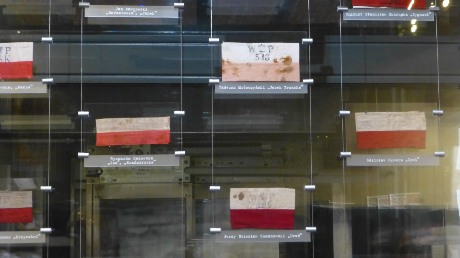 |
| Although the Soviet Army was just across the river from Warsaw, the Poles began the uprising in order to meet them as a free city. The Soviet Army did not cross the river to assist them. |
Members of the Resistance were known by their red and white armbands, some of which survive in the Uprising Museum, with the bullet holes and blood still visible. |
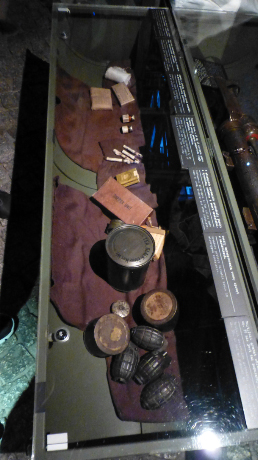 |
|
| Churchill tried to get Stalin to assist the Resistance. When he refused the RAF made very dangerous flights over Poland to drop ammunition and supplies. Many supplies fell into Nazi hands and the effort was not enough to enable the Poles to succeed. |
|























